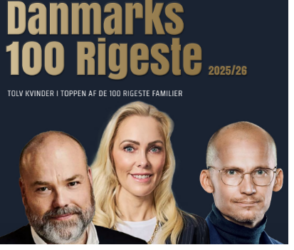Fra Danske Bank:
The global economy continues to cruise around 3% growth, close to the long-term average. So far, geopolitical uncertainty and turbulence from US tariffs have not derailed global growth. In the US, the economy has rebounded from the trade related weakness in the beginning of the year ahead of ‘liberation day’ in April. Growth is on track for 2½-3% in Q3 adding to the 3.8% annualised growth rate in Q2. The US government shutdown has been going on for a month now, and consequently we lack a lot of data releases. However, the latest indicators suggest the economy is still robust. Investments are to a large extent driven by AI-related activity and concerns over a bubble are prevalent. However, there are no signs in investment plans from big tech companies that AI investments will slow down any time soon. US labour market indicators have been mixed and continues to be a key focus for both the economic outlook and for the Fed’s policy. The government released inflation data for September showing core inflation at 3.0%; still high relative to the 2% target. The Fed funds rate was cut again on 29 October by 25bp to 3.75-4.0% and we look for another three rate cuts during 2026 to a neutral rate around 3%. This is broadly in line with market pricing and Fed’s own projections.
In the euro area, economic data points to continued cruising speed growth . Composite PMI for September increased to the highest level in more than a year and GDP for Q3 increased 1.3% y/y, around trend growth. Unemployment stayed at a multi-decade low at 6.3% in September and inflation was at 2.1% in October. ECB is as they say “in a good place” and we continue to look for rates staying at 2% over the next year.
In China, economic data still point to a two-speed economy where consumption growth and the housing market remains weak, while exports and the tech sector is running in high gear. China has released the first outline of the Five-Year Plan for 2026-2030, which shows a doubling down on tech, innovation and self-reliance as well as a higher priority to making private consumption a stronger growth driver. The latter is positive news, but we believe consumption growth will remain slow the next 1-2 years, partly due to a continued housing crisis and falling property wealth. The challenges with overcapacity, deflationary pressures and a record-high trade surplus are likely to stay with us for some time.
On the geopolitical front, US President Donald Trump and his Chinese counterpart Xi Jinping met in South Korea on 30 October. The two managed to de-escalate trade tensions once again after a new bout of escalation broke out when China announced new rare earth minerals export controls and Trump threatened to add 100% tariffs and widen tech sanctions on China. Both were retracted in a deal between the two leaders. We see it as positive that US and China can quickly de-escalate but that does not remove the uncertainty from the long-term rivalry between the two nations. Tensions between EU and China has been on the rise this year and China’s rare earth export controls and a Dutch take-over of the Chinese-owned chip company Nexperia have added to frictions. In the Middle East the temperature has been dialled down following the Israel-Hamas peace deal. News is less positive when it comes to the Ukraine war, where US attempts for a peace deal has been fruitless. It has triggered US sanctions on the two Russian energy companies Rosneft and Lukoil while EU has moved to ban energy imports from Russia from 2028.
Hurtige nyheder er stadig i beta-fasen, og fejl kan derfor forekomme.


